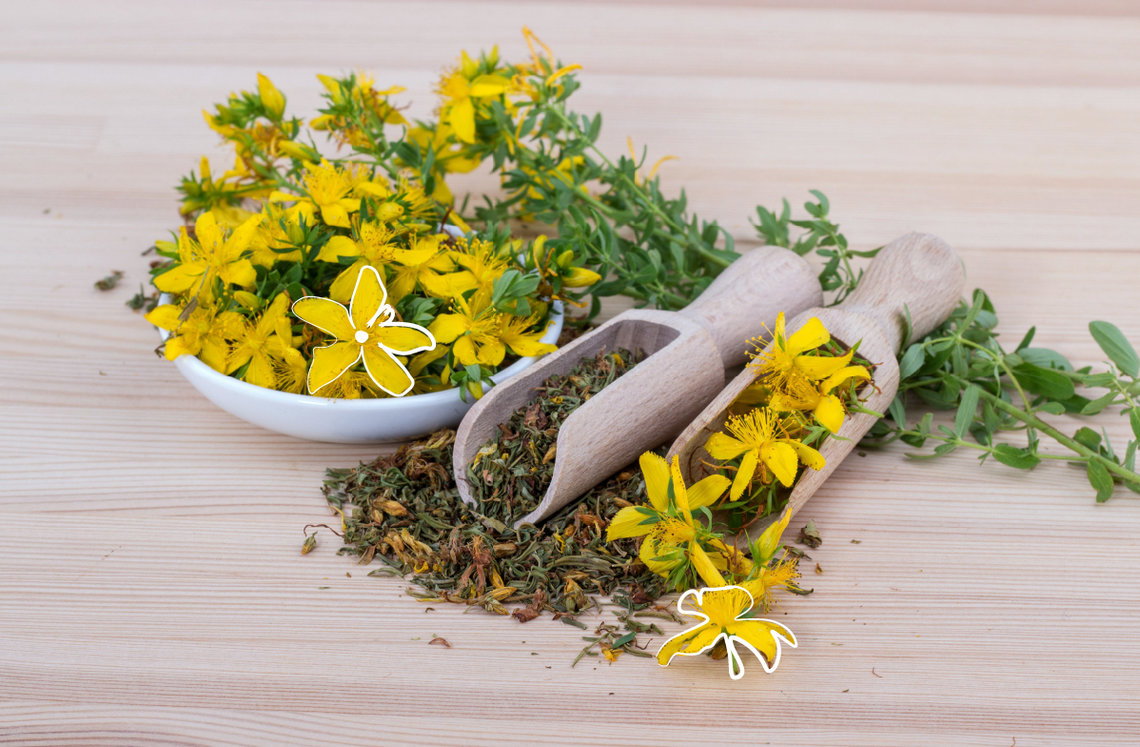Growth habit: Perennial herbaceous plant, grows between 30 and 100 cm tall.
Leaves: Oppositely arranged, elongated oval leaves with numerous translucent dots (oil glands) that make the leaf appear perforated.
Flowers: Golden yellow, five-petalled flowers with conspicuous stamens. The petals have black dots on the edge.
Flowering time: June to August
Fruits: Small, dry capsule fruits containing numerous small seeds.
Habitat: Prefers sunny to semi-shady locations, such as meadows, roadsides, open woodland and heathland.
Occurrence: Europe, Asia, North Africa; naturalized in North America and Australia.
Medicinal use: Used in herbal medicine to treat mild to moderate depression, anxiety and nervous restlessness. Also used to heal wounds and for skin diseases.
Ingredients: Hypericin, hyperforin, flavonoids, essential oils.
Application: As tea, tink tur, oil, or in the form of capsules and tablets.
Special features
Hypericum perforatum is known for its mood-lifting effect, which is mainly attributed to the active ingredients hypericin and hyperforin.
Side effects: May increase the sensitivity of the skin to sunlight (photosensitization). Interactions with certain medications are possible, so St. John's wort should not be taken without consulting a doctor.
Interesting facts:
St. John's wort got its name because its flowering period begins around St. John's Day (June 24). It was already valued as a medicinal plant in ancient times and was used to treat a variety of ailments.
Ecological importance:
St. John's wort provides food for many insects, including bees and butterflies, and contributes to biodiversity.


